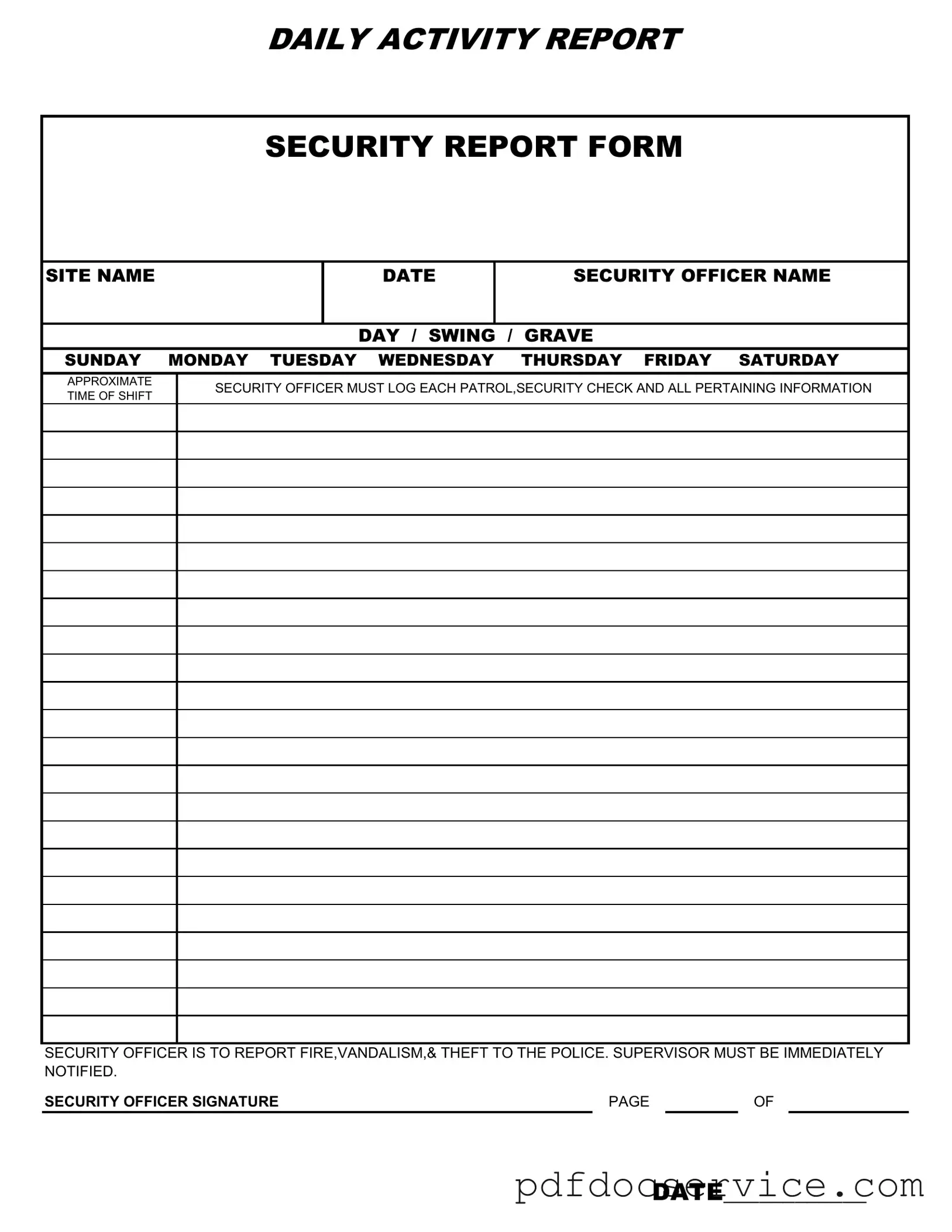Fill Your Security Guard Daily Report Sample Form
The Security Guard Daily Report Sample form serves as a structured document for security officers to log their daily activities. This form captures essential details such as the site name, date, and the security officer's name, along with a record of patrols and security checks. It also outlines critical procedures for reporting incidents like fire, vandalism, and theft to the police, ensuring immediate notification to a supervisor.
Open Security Guard Daily Report Sample Editor
